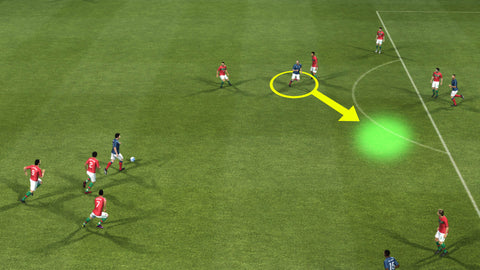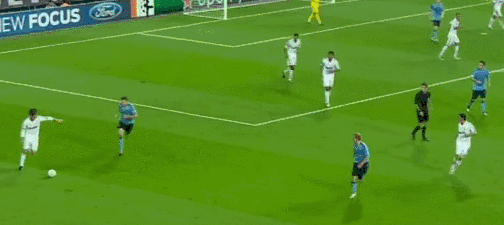Understanding Simple Offensive Strategies

Every soccer player should learn about the most basic offensive strategies because most coaches use all of them. These offensive moves are used in all of the most popular formations in soccer, so players will need to know these tactics no matter what team they play on.
Below are some very basic offensive strategies that players of all ages should know about.
The Give-and-Go
Getting a defender to stand still for even a second can give the offense a huge advantage and the give-and-go is one of the best ways to achieve this. Not only that, it is also an excellent way to get two players close together, which makes passing the ball that much easier.
To perform a simple give-and-go, one player will usually be standing with his/her back to the defense, receive a pass from a teammate, and then that teammate will run into space to receive the next pass. The key to the give-and-go is to have a plan for the “go” run as soon as you make that initial pass so the whole play seems to happen in one smooth movement.
Diagonal Runs
Too many players get into the bad habit of making simple straight runs every time they want to receive the ball. It’s okay to make a straight run when you’re open down the middle or down the sideline, but often it is better to make a diagonal run to beat the defense. There are holes in between each defender, which makes it extremely difficult to stop a diagonal run if they aren’t prepared for it.

Anyone can make a diagonal run, but most of the time it will be strikers and wingers. Their job is to time those runs to beat the defense, while the passer’s job is to pick out a ball that will put them behind the defenders. This is a simple play that can have a devastating effect when executed correctly.
Quick Switches
Going from sideline to sideline is one of the very best ways to open up a defense. Too many teams don’t practice having the quick-switch style, which often leads to them getting stuck on one side and eventually losing the ball. Teams that practice finding ways to get the ball from one side of the field to the other will often find themselves having much better possessions.
The key to quick switches is to always have a central midfielder available for a pass. Once they get the pass from a winger, side midfielder or full back, they can then look to switch the ball to the other side of the field. If the ball gets over to the other side quick enough, those players will usually have plenty of space in front of them to work an offensive play.
Overlapping Runs
One of the best off-ball runs is the overlapping run because it often leads to mismatches and/or openings for crosses. Unfortunately, many players don’t have the instinct to make these runs, which means that many teams miss out on great opportunities down the field.
The most common overlapping runs are near the sidelines, and they often include an attacker and a full back. The key to these plays is for the full back to make the run past the attacker to either make the defender(s) move or to give the attacker more space to operate. In the majority of cases, the full back is moving too quickly to cover and they are given space to make a cross.
Counter Attacks
Some coaches love playing counterattacking soccer, while others are happy to only get a couple of counter attacks per game. Either way, it is very important that players know where they’re supposed to be on the counter attack.

True counterattacking teams will have a more defensive approach to the game, but they will be quick to get the ball going the other way when they gain possession. When going on the counter attack, it’s vital that there are players who can release the pass that springs the team forward. One of the most common counterattacking plays is to feed the ball to a player down the middle, and then he/she will look for a speedy player running down the sidelines.
Long Ball Tactics
Long ball plays are great for teams that have forwards who can hold the ball up and have the vision to release another player down the field. These forwards should also have the ability to head the ball on to players making runs behind them.
When a team uses the long ball strategy, they will allow their defenders to kick the ball through the air towards the forward. Every attacking player should be looking for open space at this point since the forward will be collapsed upon pretty quickly. These long ball plays lead to a lot of goals when the team is well-trained in positioning.




Leave a comment